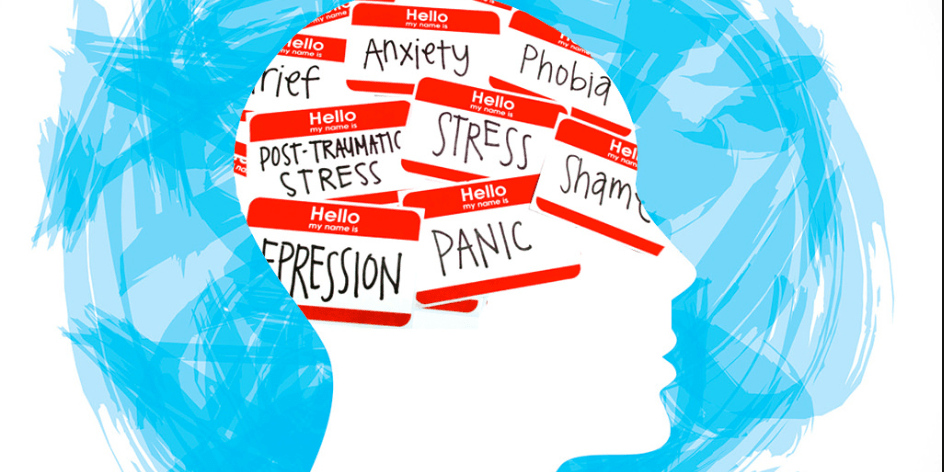Mental health has become a hot topic in recent years and rightly so, with more prevalence in the media, more funding for support and less stigma, all of which has opened the door for more people to talk about it. We all have mental health just like we all have physical health, but physical health issues in life, like a scoliosis diagnosis, surgery, or bracing, can affect us mentally too, and this side of scoliosis is rarely talked about.
Anxiety is an extremely common issue among adults, children, and young people. It is normal to be anxious in life, such as before an exam, job interview, starting a new job or school, or having major surgery! Talking to someone about your anxiety is a great way to ease your nerves, and talking to parents, friends, family or even your surgeon can help you start to start rationalise some of those worries. However, at times with scoliosis, it might seem that parents or friends just don’t understand, or it might be hard to talk, and that’s ok too.
Most often scoliosis is diagnosed between the ages of 10 and 15 years, and the average age of curve progression is thought to be 11.7 years of age in the USA. Alongside that, 50% of mental health problems are established by age 14, and 75% by age 24 . Adolescence is a difficult time for many reasons, especially when you’ve just been diagnosed with scoliosis. During puberty, our brain goes through a lot of changes, making it a time when mental health issues might develop. The rational, logical part of our brain develops more slowly than the fight/flight, fear response part of our brain, meaning in our teen years we find it harder to rationalise things in the way adults might. Because we can’t rationalise, we might start to worry and add worries about a diagnosis we have never heard of, and about surgery, being different from our peers, having to wear a brace, coupled with all the usual things that bother us when we are teenagers, such as exams, relationships and school. It is easy to see how mental health and a diagnosis such as scoliosis go hand-in-hand. So, what can we do about it? Firstly, if you are struggling, please seek help from your GP or local mental health services. Don’t be put off by the thought of long waitlists either, many GPs can sign post to charities or services that can help you in the meantime. Below are some general strategies and things you can do that may or may not help when you feel worried.
Writing worries down: writing our thoughts and worries down can help them to seem simpler and more concrete, and to stop them flying round our head. You might want to go a step further and after writing them down, by categorising them. There are two types of worry that we can categorise our thoughts into – practical and hypothetical. Practical worries are those we can do something about, such as what do I take to hospital with me? Will my parents be able to stay? I’m worried about sports after surgery, can I still play football, tennis, can I still go to dance class? These are worries we can do something about – asking for help from your surgeon, a friend, someone who’s had the surgery, a nurse, or worker at the hospital, etc. The other type of worries are hypothetical worries. These are worries we can’t control or change – for example, what if surgery goes wrong? What if my curvature has increased? What if I’m in pain after surgery? What if the morphine makes me sick? What if the anesthetic doesn’t work?! While some of these we might be able to ask for reassurance about, ultimately there’s nothing we can do to control them. The best technique for such concerns is distraction. Our brain can’t do two things at once, so find something to entertain yourself; a TV show, a podcast, a puzzle, a game, or exercise.
Other techniques are as easy as breathing. When we feel anxious, our brain sets off a fight/flight response. This is a response that stems from evolution and keeps us safe, it prepares us to either fight the danger, or run away from it. Our modern-day anxieties often can’t be fought or run from, leaving us just feeling anxious. By slowing our breathing, we fight against this fight/flight response, and turn it off. Breathing techniques can involve counting our breathes in and out, using our hand to do a technique called ‘five finger breathing’, which can slow our breaths down. YouTube has useful videos of this technique – hold one hand out, fingers spread wide, and with the index finger of your other hand, trace up and down each finger, around your hand, breathing in as you move up and out as you move down each finger. Or we can use grounding techniques, which bring us back to reality and remind us of our surroundings rather than letting ourselves to get lost in our thoughts. A common method is thinking about five things we can see, four things we can touch, three things we can hear, two things we can smell, and one thing we can taste. These techniques may be useful before an appointment, before going to hospital, even right before surgery, or for anything in life that feels stressful and overwhelming.
I also love using glitter jars with the young people I work with and encouraging them to make their own. Glitter jars are like a snow globe of glitter. When you shake them up, they can represent our brain when we feel anxious and worried – hundreds of thoughts swirling at once, unable to focus on one specific thing, as the glitter starts to settle and slow, we can also breathe deeply and settle our brains the same way the glitter settles, these are a great aid to take with you to hospital, or use in recovery, or have in your bedroom to watch as you fall asleep. They are incredibly easy to make and can be used alongside the grounding or breathing techniques.
Another common mental illness in adolescents is depression, or low mood. Low mood often occurs when we are unable to get enjoyment out of things we love, or when we stop doing things we enjoy. For someone with scoliosis, it may be that they start to feel low because they stop doing things they enjoy, be it because they’ve just had surgery and can’t participate at the moment, or they have been told their hobby isn’t ideal for someone with scoliosis. Either way, low mood can feel tough, and scoliosis doesn’t help. Sometimes limiting ourselves to lying on the sofa or in bed only reinforces that low mood, and sometimes because of pain we can’t go out and do the activities we want to. Usually, this is a short-term issue, and after surgery and recovery, most of us can go back to sports, dance, and hobbies we enjoy, but in the meantime, maybe try thinking about what matters to you. Maybe make a list of things that you find important and want to do, and see if these can be done during your recovery to make it an easier journey – i.e., texting and reaching out to friends, visiting or having family visit you, learning a new language or a new skill, sewing, drawing, or reading, making videos, TikToks, writing a blog, or making a scrapbook. Having a plan of activities that you want to do can help make recovery a little easier, and maybe a little less boring!
As someone who has experienced scoliosis surgery and is embracing a career in mental health, I have developed my own ideas of what might be helpful, but these are suggestions only and they may work for some people and not others. We’re all different, and we all handle our scoliosis and our diagnosis in our own unique ways – with different types of exercise we enjoy, whether we feel comfortable playing contact sports, using painkillers, going to physiotherapy, choosing not to have surgery, being braced. We all have our own things that we feel comfortable doing. That is the same when it comes to protecting our mental health. Find what works for you and only you, whether that is watching a film or going out for a run, playing with your dog, cat, or rabbit, or taking a long relaxing bath. Most importantly, reach out and talk. I guarantee any worries you have about scoliosis, other people with scoliosis have experienced those worries too! Follow my Instagram @scoliosisters_uk for more mental health tips, quotes, and stories.
by Victoria Steele, Children’s Wellbeing Practitioner

